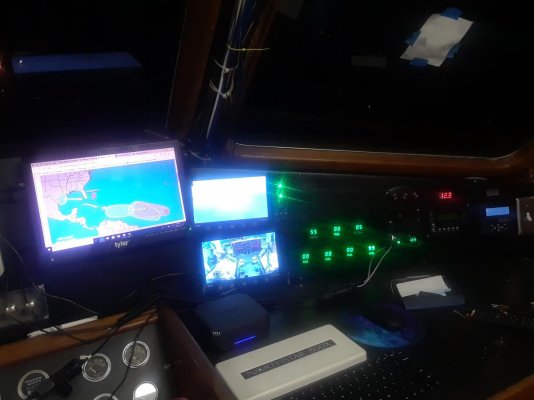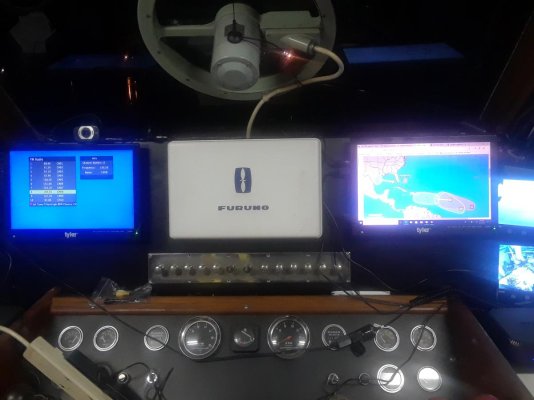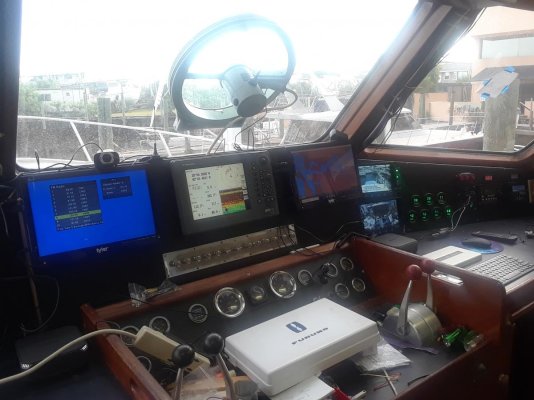ranger58sb
Guru
- Joined
- Aug 21, 2013
- Messages
- 7,342
- Location
- Annapolis
- Vessel Name
- Ranger
- Vessel Make
- 58' Sedan Bridge
Several of the recent electronics-focused threads -- especially commentary about fast obsolescence and periodic upgrades -- led me to assess what "improvements" over time have seemed most useful to me.
And this might also speak to why I can't get enthused about running right down to the chandlers every three minutes to buy the latest and greatest...
So important steps forward, to me, have been:
- GPS
- the change from LORAN and other older nav aids to dedicated plotters
- auto pilots
- MFDs (and associated networking, screen splitting, etc.) versus dedicated plotters
- color versus grayscale or monochrome (charting, RADAR, depth)
- Instant re-draw
- user-chosen raster and vector charting (recognizing that U.S. NOAA raster charting is changing now...)
- periodic chart updates
- user-chosen separate RADAR displays or overlays onto charts
I also appreciate a few "nice to have" capabilities:
- tides and currents displayed on the chart
- depth shading
Then there are what I'd call bling and glitz, rarely useful for me, not what I'd use to select nav equipment -- and not capabilities that I've used often even though I've had some of these:
- 3D displays
- Overhead photography
- auto routing
- I hardly ever even use waypoints or pre-planned routes
I haven't decided my thoughts about WiFi. Sounds like maybe a way to avoid fishing cables throughout the boat, from sensor to display. If reliable? Sounds like a way to upload/download points, tracks, and routes... although I haven't found using an SD card to be much of an obstacle. (Our new-to-us Garmin 7612xsv, at least one generator old, has WiFi. Haven't seen any value in that; had to upload software and chart updates from an SD card anyway.) Displaying something on external devices? Ho hum.
Anyway... I have difficulty postulating additional "improvements" that would seriously ring my chimes. Failure of imagination, I guess. Hence my preference to buy/install a nifty electronics suite once... and then just getting on with using it over our lifetime with the boat. (Repairs or failure replacements allowed.)
Just thoughts...
-Chris
And this might also speak to why I can't get enthused about running right down to the chandlers every three minutes to buy the latest and greatest...
So important steps forward, to me, have been:
- GPS
- the change from LORAN and other older nav aids to dedicated plotters
- auto pilots
- MFDs (and associated networking, screen splitting, etc.) versus dedicated plotters
- color versus grayscale or monochrome (charting, RADAR, depth)
- Instant re-draw
- user-chosen raster and vector charting (recognizing that U.S. NOAA raster charting is changing now...)
- periodic chart updates
- user-chosen separate RADAR displays or overlays onto charts
I also appreciate a few "nice to have" capabilities:
- tides and currents displayed on the chart
- depth shading
Then there are what I'd call bling and glitz, rarely useful for me, not what I'd use to select nav equipment -- and not capabilities that I've used often even though I've had some of these:
- 3D displays
- Overhead photography
- auto routing
- I hardly ever even use waypoints or pre-planned routes
I haven't decided my thoughts about WiFi. Sounds like maybe a way to avoid fishing cables throughout the boat, from sensor to display. If reliable? Sounds like a way to upload/download points, tracks, and routes... although I haven't found using an SD card to be much of an obstacle. (Our new-to-us Garmin 7612xsv, at least one generator old, has WiFi. Haven't seen any value in that; had to upload software and chart updates from an SD card anyway.) Displaying something on external devices? Ho hum.
Anyway... I have difficulty postulating additional "improvements" that would seriously ring my chimes. Failure of imagination, I guess. Hence my preference to buy/install a nifty electronics suite once... and then just getting on with using it over our lifetime with the boat. (Repairs or failure replacements allowed.)
Just thoughts...
-Chris




